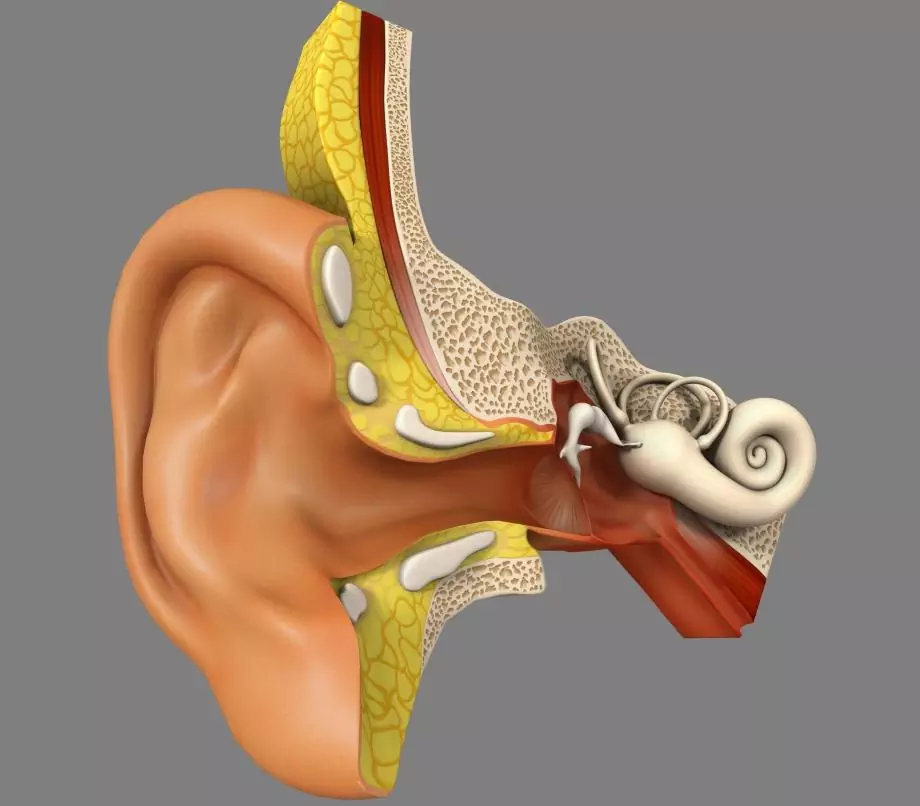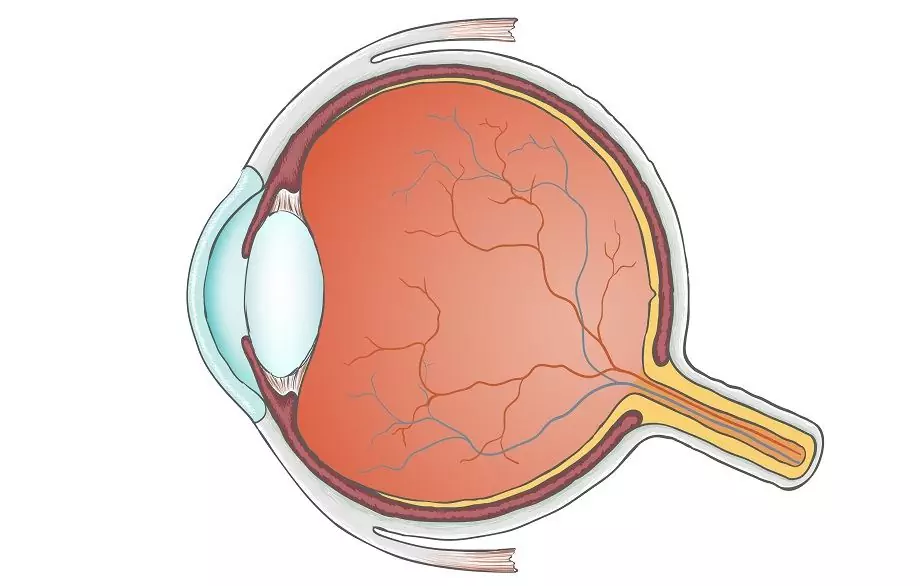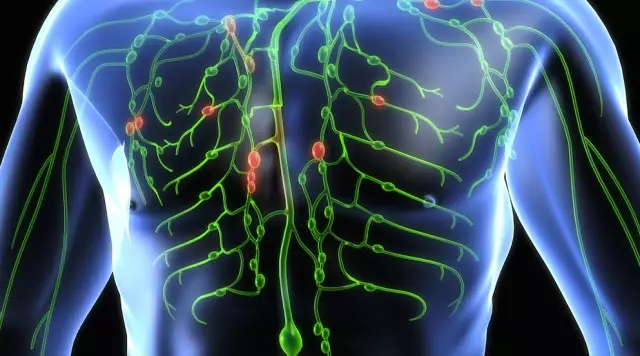- Author Rachel Wainwright [email protected].
- Public 2023-12-15 07:39.
- Last modified 2025-11-02 20:14.
Organ of hearing
The organ of hearing. general information
The human hearing organ is a paired organ designed to perceive sound signals, which, in turn, affects the quality of orientation in the environment.

Sound signals are perceived using a sound analyzer, the main structural unit of which is phonoreceptors. The auditory nerve, which is part of the vestibular cochlear nerve, carries information in the form of signals. The final point of receiving signals and the place of their processing is the cortical section of the auditory analyzer, located in the cerebral cortex, in its temporal lobe. More detailed information on the structure of the organ of hearing is presented below.
The structure of the organ of hearing
The organ of hearing in humans is the ear, in which three sections are distinguished:
- The outer ear, represented by the auricle, the external auditory canal, and the eardrum. The auricle is composed of elastic cartilage covered with skin and has a complex shape. In most cases, it is motionless, its functions are minimal (compared to animals). The length of the external auditory canal is from 27 to 35 mm, the diameter is about 6-8 mm. Its main task is to conduct sound vibrations to the eardrum. Finally, the tympanic membrane, formed by the connective tissue, is the outer wall of the tympanic cavity and separates the middle ear from the outer;
- The middle ear is located in the tympanic cavity - a depression in the temporal bone. In the tympanic cavity there are three ossicles known as the malleus, incus, and stapes. In addition, the middle ear has an Eustachian tube that connects the middle ear cavity to the nasopharynx. By interacting with each other, the auditory ossicles direct sound vibrations to the inner ear;
- The inner ear is a membranous labyrinth located in the temporal bone. The inner ear is divided into a vestibule, three semicircular canals, and a cochlea. Only the cochlea is directly related to the organ of hearing, while the other two elements of the inner ear are part of the organ of balance. The snail looks like a thin cone, twisted in the form of a spiral. Along its entire length, it is divided by two membranes into three channels - the vestibule staircase (upper), the cochlear duct (middle) and the tympanic staircase (lower). In this case, the lower and upper canals are filled with a special liquid - perilymph, and the cochlear duct is filled with endolymph. The main membrane of the cochlea contains the organ of Corti, an apparatus that perceives sounds;
- The organ of Corti is represented by several rows of hair cells that act as receptors. In addition to the receptor cells of Corti, the organ contains an integumentary membrane overhanging the hair cells. It is in the organ of Corti that the vibrations of the fluids filling the ear are converted into a nerve impulse. Schematically, this process looks like this: sound vibrations are transmitted from the fluid filling the cochlea to the stapes, due to which the membrane with hair cells located on it begins to vibrate. During oscillations, they touch the integumentary membrane, which leads them to a state of excitement, and this, in turn, entails the formation of a nerve impulse. Each hair cell is connected to a sensory neuron, the totality of which forms the auditory nerve.
Diseases of the hearing organs
Protection of hearing organs and prevention of diseases should be regular, since some diseases can cause not only hearing impairment and, as a result, orientation in space, but also affect the sense of balance. In addition, the rather complex structure of the organ of hearing, some isolation of a number of its departments often complicate the diagnosis of diseases and their treatment.
The most common diseases of the organ of hearing can be divided into four conditional categories: inflammatory, non-inflammatory, resulting from trauma and caused by fungal invasion:
- Inflammatory diseases of the organ of hearing, among which are often otitis media, labyrinthitis, otosclerosis, occur after viral or infectious diseases. The manifestations of otitis media of the external ear include suppuration, pain and itching in the area of the ear canal. Sometimes hearing loss is a symptom. In the absence of timely treatment, otitis media often becomes chronic, or gives complications. Inflammation of the middle ear is accompanied by a rise in temperature, severe hearing impairment, and a sharp shooting pain in the ear. The appearance of purulent discharge is a sign of purulent otitis media. With delayed treatment of this disease of the organ of hearing, the likelihood of damage to the tympanic membrane is high. Finally, otitis media of the inner ear causes dizziness, a rapid drop in the quality of hearing, inability to focus the gaze. Complications of this disease can be labyrinthitis, meningitis, brain abscess, blood poisoning;
- Non-inflammatory diseases of the organ of hearing. These include, in particular, otosclerosis - a hereditary lesion of the bone of the ear capsule, causing hearing loss. With another ear disease - Meniere's disease - the amount of fluid in the inner ear cavity increases, which puts pressure on the vestibular apparatus. Symptoms of the disease are vomiting, nausea, tinnitus, and progressive hearing loss. Another type of non-inflammatory disease is neuritis of the vestibular cochlear nerve. It can provoke the onset of hearing loss. Most often, surgical methods are used to treat non-inflammatory ear diseases, which is why timely and thorough protection of the hearing organs is important, which will prevent the deterioration of the course of the disease;
- Fungal diseases of the organ of hearing, as a rule, are caused by opportunistic fungi. The course of such diseases is complicated, often leading to sepsis. In some cases, otomycosis develops in the postoperative period, with traumatic skin injuries, etc. With fungal diseases, frequent complaints of patients are complaints of discharge from the ear, constant itching and tinnitus. Treatment of diseases is long-term, but the presence of a fungus in the ear does not always provoke the development of the disease. Proper prevention and care of hearing organs will prevent the disease from developing.
Found a mistake in the text? Select it and press Ctrl + Enter.






